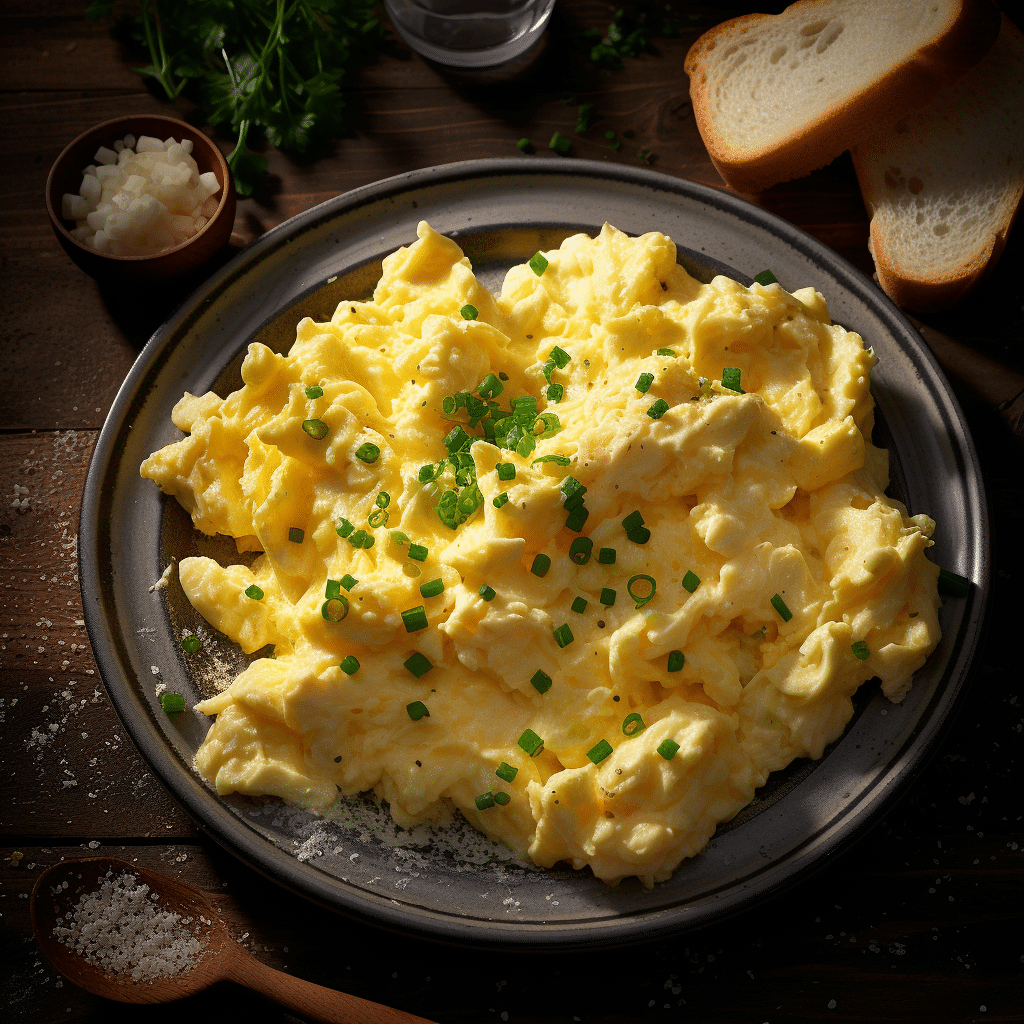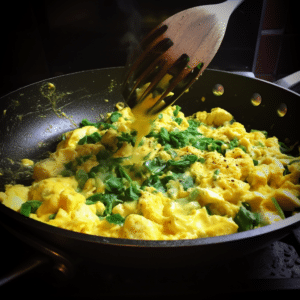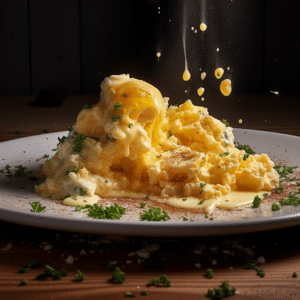
Perfectly Cooked Scrambled Eggs: Tips and Techniques
Scrambled eggs are a staple of many cultures and one of the world’s most popular breakfast dishes. While they’re often seen as a savory version of baked eggs, scrambled eggs also have another role: an excellent addition to any salad, sandwich, or wrap!
They can give you energy in the morning and a real boost later in the day when you need it most.
Obviously, you’ve probably discovered that many variables affect the taste and texture of your eggs. In order to gauge when they’re done cooking and have reached the perfect consistency, you’ll need to know how long to cook them.
Here is a step-by-step guide to tell when scrambled eggs are done.

Identifying Perfectly Cooked Scrambled Eggs
Scrambled eggs are the perfect comfort food and meal to have on a cold winter’s day. They’re also one of the most leisurely breakfasts, requiring only a few ingredients and time to prepare.
However, there’s more to scrambled eggs than meets the eye, so you’ll need to cook them properly. And with cooking scrambled eggs, many factors affect their outcome.
The first thing you’ll want to check is texture: Is the egg still a bit wet, or has it completely settled? If it’s still wet, continue cooking until the egg is no longer runny or liquid.
Similarly, you should check the color: The whites of a hard-cooked egg will be bright yellow; a soft-cooked egg will have a golden yolk with no trace of white at all. So, if you see any browning in either case, continue cooking.
Another sign of doneness is when the yolk won’t hold its shape anymore — when it falls apart if you pick it up with your spoon or fork and drop it back into the pan, or when you flip an entire omelet over without breaking through the surface.
Generally, the longer an egg cooks, the harder it becomes. Most recipes suggest cooking eggs for 3 to 5 minutes in a pan or grill to avoid overcooking. All in all, perfectly cooked scrambled eggs are soft, moist, and full of flavor. They’re not dry or rubbery but have a custard-like texture with a bit of resistance.
How To Make Scrambled Eggs
Scrambled eggs are a great way to start the day, but they can also be a meal for themselves. If you want your scrambled eggs to be as fluffy and light as possible, it’s essential to use the right cooking approach. Basically, there are many methods that you can use to create scrambled eggs perfectly. However, here are some basic tips you can rely on when cooking scrambled eggs every time:
Use fresh eggs
Always use fresh eggs for the best results. Old eggs can make a significant difference when it comes to scrambling.
Preheat the pan
The first step to cooking scrambled eggs is preheating your skillet. This will help the eggs cook more evenly and prevent them from sticking to the pan. Place the skillet on high heat, and allow it to get hot before adding any oil or butter.
Add oil
Oil is a great addition to scrambled eggs. The oil acts as a lubricant, preventing the egg whites from getting stuck to each other. You can use any oil you like — ensure it won’t burn easily.
Add salt
Adding salt will help bring out the flavor in your scrambled eggs — especially if you’re using store-bought eggs that have already been processed with salting agents (butterfat), making them taste salty. Add about 1/4 teaspoon of table salt per egg if you use homemade ones instead of canned ones.
Stir constantly
The eggs will cook faster if you stir and fold them frequently. Stirring also prevents the bottom of the pan from burning, which can happen if the pan is not properly coated with oil or butter.
Similarly, use a heavy skillet or pan to prevent curling and to stick. A thin pan may make your eggs stick to the bottom of the pan and not cook properly. The same is also true with a nonstick skillet which may induce curling.
Don’t overmix!
Scrambled eggs are supposed to be broken up into small pieces as they cook, which makes them more absorbent than other types of omelets or frittatas. Mixing them too much will result in lumps or clumps in your final product (and make you think twice about eating it!)
Use low heat
When scrambling your eggs, always use low heat. You want the pan to be hot enough that the egg whites will begin to cook quickly but not so hot that the yolks will scramble before the whites are cooked.
When the eggs are finished cooking, they will be soft but still, have a bit of resistance to them. You can also use a fork to poke them and see if they are done gently.
Avoid Overcooking
When you make scrambled eggs, you want them to be soft and creamy. But if you overcook them, they’ll become dry and rubbery. To avoid overcooking, use a timer when making scrambled eggs. Set your timer for four to five minutes and frequently check until the eggs are done.
Always Season your eggs at the end.
Early seasoning of eggs may affect their cooking, ultimately making it watery or running. So, it’s highly recommended that you add your seasoning at the end of the cooking process to avoid this and many other inconveniences.
In the end, before removing the eggs from the pan, ensure they are slightly moist and not extremely brown. If they are, remove them from the pan and transfer them onto a plate.

Bottom Line
No one likes mushy or hard-boiled eggs. And the thing about scrambled eggs is that there are no set rules for how to make them. There are, however, a few general guidelines for making scrambled eggs.
Following these guidelines, you can create soft yet firm, crisp, creamy scrambled eggs. In summary—add eggs to preheated pan on medium heat, constantly stirring while they cook. Continue cooking until they are no longer runny throughout but aren’t dry either.